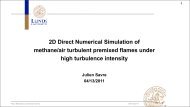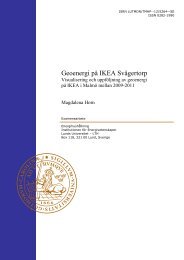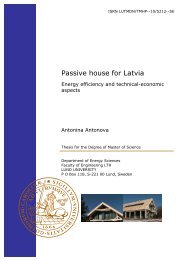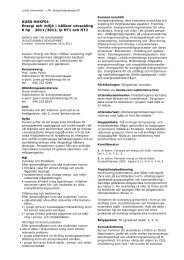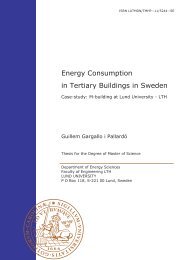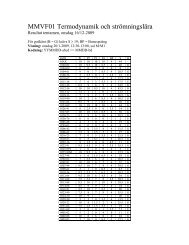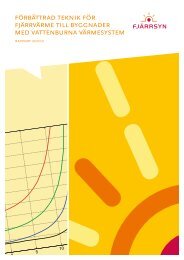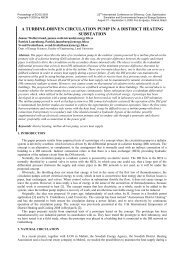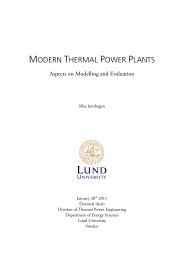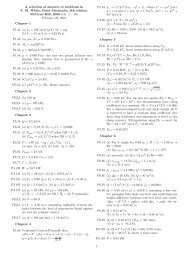Thesis for degree: Licentiate of Engineering
Thesis for degree: Licentiate of Engineering
Thesis for degree: Licentiate of Engineering
You also want an ePaper? Increase the reach of your titles
YUMPU automatically turns print PDFs into web optimized ePapers that Google loves.
Abstract<br />
The purpose <strong>of</strong> this work is to investigate the interaction between transport processes and<br />
chemical reactions, with special emphasis on modeling mass transport by the Lattice<br />
Boltzmann method (LBM) at microscale <strong>of</strong> the anode <strong>of</strong> a solid oxide fuel cell (SOFC). In<br />
order to improve the per<strong>for</strong>mance <strong>of</strong> an SOFC, it is important to determine the microstructural<br />
effect embedded within the physical and chemical processes, which usually are modeled<br />
macroscopically. Without detailed knowledge <strong>of</strong> the transport processes and the chemical<br />
reactions at microscale it can be difficult to capture their effect and to justify assumptions <strong>for</strong><br />
the macroscopic models with regard to the source terms and various properties in the porous<br />
electrodes. The advantage <strong>of</strong> an anode-supported SOFC structure is that the thickness <strong>of</strong> the<br />
electrolyte can be reduced, while still providing an internal re<strong>for</strong>ming environment. For this<br />
configuration with an enlarged anode, more detailed knowledge <strong>of</strong> the porous domain in<br />
terms <strong>of</strong> the physical processes at microscale is called <strong>for</strong>.<br />
In the first part <strong>of</strong> this study, the current literature on the modeling <strong>of</strong> transport processes and<br />
chemical reactions mechanisms at microstructural scales is reviewed with special focus on the<br />
LBM followed by a report on the emphasis to couple conventional CFD to LBM. In the<br />
second part, two models are described. The first model is developed at microscale by LBM<br />
<strong>for</strong> the anode <strong>of</strong> an SOFC in MATLAB. In the LB approach, the main point is to carefully<br />
model the diffusion and convection at microscale in the porous region close to the threephase-boundary<br />
(TPB). The porous structure is reconstructed from digital images, and<br />
processed by Python. The second model is developed at macroscale <strong>for</strong> the whole unit cell.<br />
For the macroscale model the kinetic model is evaluated at smaller scales to investigate if any<br />
severe limiting effects on the heat and mass transfer occur.<br />
LBM has been found to be an alternative method <strong>for</strong> modeling at microscale and can handle<br />
complex geometries easily. However, there is still a need <strong>for</strong> a supercomputer to solve models<br />
with several physical processes and components <strong>for</strong> a larger domain. The result <strong>of</strong> the<br />
macroscale model shows that the three reaction rate models are fast and vary in magnitude.<br />
The pre-exponential values, in relation to the partial pressures, and the activation energy<br />
affect the reaction rate. The variation in amount <strong>of</strong> methane content and steam-to-fuel ratio<br />
reveals that the composition needs a high inlet temperature to enable the re<strong>for</strong>ming process<br />
and to keep a constant current-density distribution. As experiments with the same chemical<br />
compositions can be conducted on a cell or a re<strong>for</strong>mer, the effect <strong>of</strong> the chosen kinetic model<br />
on the heat and mass transfer was checked so that no severe limitation are caused on the<br />
processes at microscale <strong>for</strong> an SOFC.<br />
For future work, macroscale and microscale models will be connected <strong>for</strong> the design <strong>of</strong> a<br />
multiscale model. Multiscale modeling will increase the understanding <strong>of</strong> detailed transport<br />
phenomena and it will optimize the specific design and control <strong>of</strong> operating conditions. This<br />
can <strong>of</strong>fer crucial knowledge <strong>for</strong> SOFCs and the potential <strong>for</strong> a breakthrough in their<br />
commercialization.<br />
Keywords: mass transport, diffusion, microscale, porous media, kinetics, LBM, CFD, anode<br />
multicomponent, MATLAB.<br />
2



